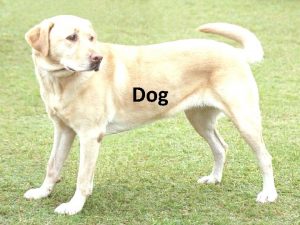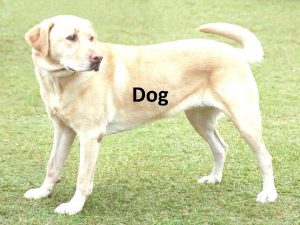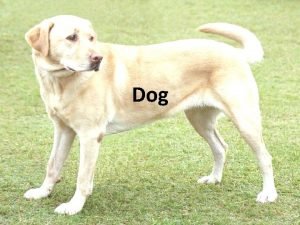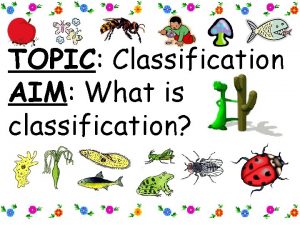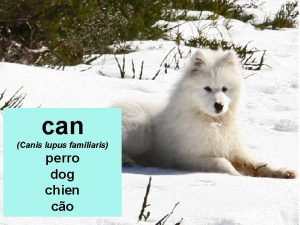Dog Classification The domestic dog Canis lupus familiaris




- Slides: 4

Dog

Classification The domestic dog (Canis lupus familiaris and Canis lupus dingo) is a domesticated form of the grey wold, a member of the Canidae family of the order Carnivora. The term is used for both feral and pet varieties. The dog may have been the first animal to be domesticated, and has been the most widely kept working, hunting, and companion animal in human history. The word "dog" may also mean the male of a canine species, as opposed to the word "bitch" for the female of the species. Kingdom: Animalia Phylum: Chordata Class: Mammalia Order: Carnivora Family: Canidae Genus: Canis Species: C. lupus Subspecies: C. l. familiaris and C. l. dingo These are a carnivorous species which can adapt to a wide ranging diet such as meat but it can also include vegetables and grains. A number of common human foods and household ingestible are toxic to dogs, including chocolate (theobromine poisoning), onion and garlic (throsulphate, sulfoxide or disulfide poisoning), grapes and raisins, macadamia nuts, as well as various plants and other potentially ingested materials. Dogs were domesticated from gray wolves about 15, 000 years ago. Dogs perform many roles for people, such as hunting, herding, pulling loads, protection, assisting police and military, companionship, and, more recently, aiding handicapped individiuals. Over the 15, 000 year span the dog had been domesticated, it diverged into only a handful of landraces, groups of similar animals whose morphology and behavior have been shaped by environmental factors and functional roles. Through selective breeding by humans, the dog has developed into hundreds of varied breeds, and shows more behavioral and morphological variation than any other land mammal. The typical lifespan of dogs varies widely among breeds, but for most the median longevity, the age at which half the dogs in a population have died and half are still alive, ranges from 10 to 13 years. http: //en. wikipedia. org/wiki/Dog


1. 2. 3. 4. 5. 1. 2. 3. 4. 5. 6. Genioglossus Geniohyoideus Hypoglossus Palatoglossal folds Styloglossus Mylohoideus
